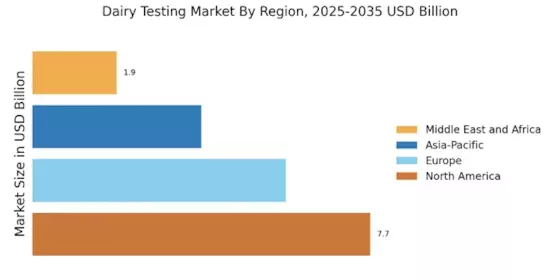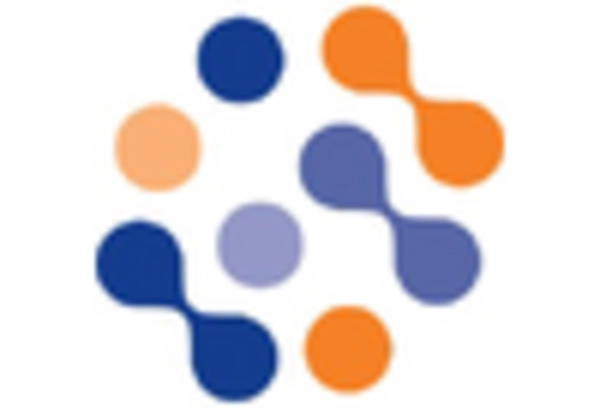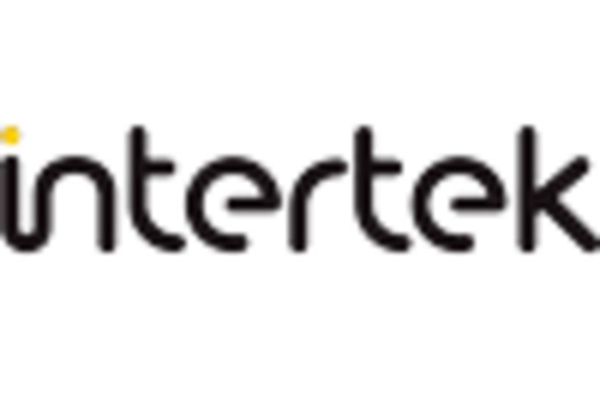Focus on Food Safety
Food safety remains a paramount concern for consumers and regulatory bodies alike. The dairy Testing Market is increasingly focused on ensuring that dairy products are free from contaminants and pathogens. Recent studies indicate that foodborne illnesses linked to dairy products have prompted stricter testing protocols. The implementation of advanced testing technologies, such as PCR and rapid testing methods, is becoming commonplace. In 2024, the food safety testing market was valued at around 20 billion USD, with a significant portion attributed to dairy testing. This emphasis on safety not only protects consumers but also enhances brand reputation and market competitiveness.
Increasing Regulatory Standards
Regulatory bodies are continuously updating standards for dairy products to ensure consumer safety and product quality. The Dairy Testing Market must adapt to these evolving regulations, which often require more comprehensive testing protocols. In recent years, there has been a notable increase in the number of regulations concerning antibiotic residues, microbial contamination, and nutritional labeling. Compliance with these standards is essential for market access and consumer confidence. The financial implications of non-compliance can be severe, leading to product recalls and loss of market share, thus underscoring the importance of rigorous testing in the dairy sector.
Consumer Awareness and Education
There is a growing trend of consumer awareness regarding the quality and safety of dairy products. The Dairy Testing Market is witnessing an increase in demand for transparency and traceability in dairy sourcing. Consumers are more informed about the potential health risks associated with dairy consumption, prompting them to seek products that are tested and certified. This shift in consumer behavior is influencing manufacturers to invest in quality assurance measures and testing protocols. As a result, the market for dairy testing services is expected to expand, driven by the need for credible information and assurance of product safety.
Rising Demand for Dairy Products
The increasing global population and changing dietary preferences are driving the demand for dairy products. As consumers become more health-conscious, the consumption of dairy items such as milk, cheese, and yogurt is on the rise. This trend is particularly evident in developing regions where dairy consumption is expected to grow significantly. The Dairy Testing Market is responding to this demand by ensuring that products meet safety and quality standards. In 2023, the dairy sector was valued at approximately 700 billion USD, with projections indicating continued growth. This surge in demand necessitates rigorous testing to maintain product integrity and consumer trust.
Technological Innovations in Testing
Technological advancements are revolutionizing the Dairy Testing Market. Innovations such as automated testing systems, real-time monitoring, and advanced analytical techniques are enhancing the efficiency and accuracy of dairy testing. These technologies enable quicker turnaround times for test results, which is crucial for manufacturers aiming to meet consumer demand promptly. The market for dairy testing technologies is projected to grow at a CAGR of 7% from 2025 to 2030. As these innovations continue to evolve, they are likely to play a pivotal role in shaping the future of dairy quality assurance and compliance.

















